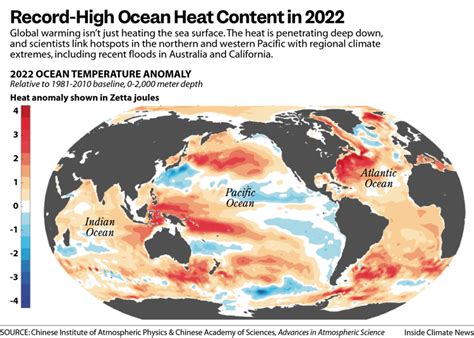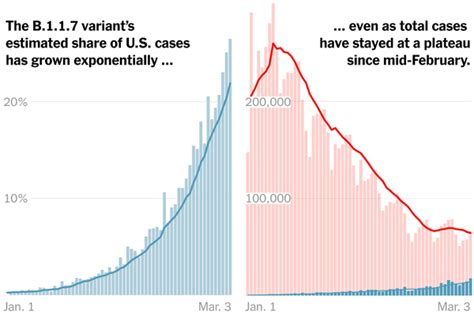
A shift in tropical climate patterns is underway, with a cooling trend emerging in the Pacific Ocean that has taken climate experts by surprise, potentially impacting global weather systems in unforeseen ways. Initial observations indicate that the Pacific Ocean is entering a phase distinctly different from the recent El Niño events, raising questions about the future state of global weather and climate.
Pacific Cooling Baffles Experts, Signals Potential Shift in Global Weather Patterns
A significant and unexpected shift is occurring in tropical climate patterns, as the Pacific Ocean experiences a cooling trend that has taken climate experts by surprise. This emerging pattern indicates a potential deviation from the recent El Niño events, raising significant questions about future global weather conditions. The shift may have implications for weather patterns around the world.
“We are seeing the beginning of what might be a significant change,” stated Dr. Michelle L’Heureux, a climate scientist at the Climate Prediction Center, part of the National Oceanic and Atmospheric Administration (NOAA). “This cooling in the Pacific, if it continues, could lead to widespread changes in weather patterns across the globe.”
Unexpected Cooling Trend
For months, climate models had projected a continuation of warm conditions in the Pacific, partly due to the lingering effects of a strong El Niño. Instead, ocean temperatures have begun to decrease rapidly in the central and eastern Pacific, an area that typically experiences warm waters during El Niño and cooler waters during La Niña.
“The speed at which this cooling has occurred is unprecedented in recent history,” noted Dr. James Renwick, a professor of physical geography at Victoria University of Wellington in New Zealand. “It is a departure from what most models predicted, and it is essential to understand the reasons behind it.”
The cause of this rapid cooling is still under investigation. Some scientists believe that the trade winds, which usually push warm water westward, have strengthened and led to increased upwelling of cold water from the ocean depths. Others suggest that changes in atmospheric circulation patterns are at play.
Potential Impacts on Global Weather
The cooling in the Pacific could have far-reaching effects on global weather patterns. Typically, a cooling Pacific is associated with La Niña, which brings about drier conditions in the southern United States and increased rainfall in Southeast Asia and Australia. However, the current situation does not neatly align with a typical La Niña pattern.
“We are entering uncharted territory,” explained Dr. L’Heureux. “The atmospheric response to this cooling may differ from what we have seen in past La Niña events. We need to closely monitor the situation and refine our models to better predict the potential impacts.”
One potential outcome is a shift in the jet stream, a high-altitude wind current that steers weather systems across North America. A change in the jet stream could lead to altered precipitation patterns, temperature fluctuations, and the frequency of extreme weather events, such as droughts and floods.
In Europe, the cooling Pacific could influence the strength and direction of the North Atlantic Oscillation (NAO), a climate pattern that affects weather conditions across the continent. A negative NAO phase, which is sometimes associated with a colder North Atlantic, could lead to colder winters in Europe and increased storm activity.
Unprecedented Uncertainty
The unexpected nature of this cooling trend has introduced a high degree of uncertainty into climate forecasting. Climate models, which are used to predict future weather patterns, have struggled to accurately capture the recent changes in the Pacific.
“This event highlights the limitations of our current models,” said Dr. Renwick. “We need to invest in improving our understanding of ocean-atmosphere interactions and develop more sophisticated models that can better capture the complexities of the climate system.”
The scientific community is now focusing its efforts on gathering more data and refining climate models to better understand the causes and potential impacts of this cooling trend. Satellites, ocean buoys, and weather stations are being used to monitor ocean temperatures, wind patterns, and atmospheric conditions.
Preparing for the Unknown
Given the uncertainty surrounding the future of this cooling trend, it is essential to prepare for a range of potential outcomes. Governments, businesses, and communities need to take steps to enhance their resilience to extreme weather events, such as droughts, floods, and heat waves.
“Adaptation is key,” emphasized Dr. L’Heureux. “We need to build infrastructure that can withstand more frequent and intense weather events, develop water management strategies to cope with droughts, and invest in early warning systems to alert people to impending hazards.”
The cooling Pacific underscores the complex and interconnected nature of the global climate system. As climate change continues to alter weather patterns around the world, it is becoming increasingly important to improve our understanding of climate dynamics and develop strategies to adapt to a changing world.
Long-term Implications
The implications of this cooling event extend beyond short-term weather patterns. A prolonged period of cooling in the Pacific could potentially offset some of the warming effects of climate change, at least temporarily. However, scientists caution that this cooling is unlikely to reverse the long-term warming trend caused by greenhouse gas emissions.
“While this cooling may provide some temporary relief from rising temperatures, it is not a solution to climate change,” warned Dr. Renwick. “We still need to take urgent action to reduce greenhouse gas emissions and mitigate the long-term impacts of climate change.”
The cooling Pacific serves as a reminder of the inherent variability of the climate system. Even as the planet continues to warm, natural climate fluctuations can still exert a significant influence on regional and global weather patterns.
The Need for Further Research
The scientific community is intensifying its efforts to understand the processes driving this cooling trend. Further research is needed to determine the extent to which natural variability and human-caused climate change are contributing to the observed changes.
“We need to unravel the complex interactions between the ocean and the atmosphere,” said Dr. L’Heureux. “Only then can we develop more accurate climate models and better predict future weather patterns.”
International collaboration is essential to address the challenges posed by a changing climate. Scientists from around the world are working together to share data, develop models, and conduct research to improve our understanding of the climate system.
As the Pacific Ocean continues to evolve, it is crucial to stay informed about the latest developments and prepare for the potential impacts of this unprecedented cooling trend. The future of global weather patterns may depend on our ability to understand and adapt to this changing climate.
El Niño/La Niña and Global Weather Patterns
The El Niño-Southern Oscillation (ENSO) is a recurring climate pattern involving changes in the temperature of waters in the central and eastern tropical Pacific Ocean. On the warm end of the spectrum is El Niño, and on the cool end is La Niña. These oscillations impact global weather patterns significantly.
El Niño is characterized by warmer-than-average sea surface temperatures in the central and eastern tropical Pacific Ocean. This warming can affect atmospheric circulation patterns, leading to changes in rainfall, temperature, and wind patterns around the world. For instance, during El Niño events, the southern United States tends to experience wetter and cooler conditions, while Australia and Southeast Asia often face drier conditions.
La Niña, on the other hand, is characterized by cooler-than-average sea surface temperatures in the same region. La Niña events typically bring about the opposite effects, with drier conditions in the southern United States and increased rainfall in Southeast Asia and Australia.
The ENSO cycle typically lasts for several months to a year or more, and its effects can be felt across multiple seasons. Climate scientists closely monitor the ENSO cycle to provide forecasts and warnings about potential weather impacts, allowing communities and governments to prepare for extreme weather events.
The recent cooling trend in the Pacific Ocean has surprised experts because climate models had been projecting warm conditions due to the lingering effects of a strong El Niño. This unexpected cooling suggests a potential transition towards a La Niña-like state or a more neutral condition, which could alter global weather patterns in ways that differ from typical El Niño or La Niña events.
The Role of Trade Winds and Upwelling
Trade winds play a critical role in the dynamics of the Pacific Ocean and the ENSO cycle. These winds, which blow from east to west near the equator, push warm surface water westward, creating a buildup of warm water in the western Pacific. This process leads to a difference in sea surface temperatures across the Pacific, with warmer waters in the west and cooler waters in the east.
During La Niña events, the trade winds strengthen, further pushing warm water westward and increasing the upwelling of cold water from the ocean depths in the eastern Pacific. Upwelling is the process by which cold, nutrient-rich water rises to the surface, leading to lower sea surface temperatures.
The recent cooling trend in the Pacific may be linked to stronger-than-usual trade winds, which have intensified upwelling and led to a rapid decrease in sea surface temperatures. This mechanism is still under investigation, but it highlights the importance of trade winds in regulating ocean temperatures and influencing global weather patterns.
Ocean-Atmosphere Interactions
The climate system is characterized by complex interactions between the ocean and the atmosphere. Changes in ocean temperatures can affect atmospheric circulation patterns, and vice versa. These interactions play a crucial role in determining regional and global weather conditions.
For example, during El Niño events, the warmer-than-average sea surface temperatures in the central and eastern Pacific can lead to changes in atmospheric pressure patterns, which in turn can affect the jet stream and alter precipitation patterns across North America.
Similarly, during La Niña events, the cooler-than-average sea surface temperatures can influence atmospheric circulation and lead to different weather patterns around the world.
Understanding these ocean-atmosphere interactions is essential for developing accurate climate models and predicting future weather patterns. The recent cooling trend in the Pacific underscores the complexity of these interactions and the need for further research to improve our understanding of the climate system.
Impact on Agriculture and Food Security
Changes in weather patterns can have significant impacts on agriculture and food security. Droughts, floods, and extreme temperatures can damage crops, reduce yields, and disrupt food supply chains.
El Niño and La Niña events have been linked to significant agricultural impacts in various regions around the world. For instance, El Niño events have been associated with droughts in Australia and Southeast Asia, which can lead to reduced crop production and food shortages. La Niña events, on the other hand, have been linked to increased rainfall in some regions, which can lead to flooding and crop damage.
The recent cooling trend in the Pacific could potentially alter agricultural conditions in many parts of the world. Farmers and agricultural policymakers need to closely monitor weather forecasts and adapt their practices to mitigate the potential impacts of changing weather patterns. This may involve implementing water management strategies, planting drought-resistant crops, and diversifying agricultural production.
Economic Consequences
Extreme weather events can have significant economic consequences, affecting various sectors such as agriculture, tourism, transportation, and energy. Droughts, floods, and storms can disrupt economic activity, damage infrastructure, and lead to increased costs for businesses and consumers.
El Niño and La Niña events have been linked to significant economic losses in various regions around the world. For example, droughts associated with El Niño events can lead to reduced agricultural output and higher food prices. Floods associated with La Niña events can damage infrastructure and disrupt transportation networks.
The recent cooling trend in the Pacific could potentially alter economic conditions in many parts of the world. Governments and businesses need to assess the potential risks and opportunities associated with changing weather patterns and develop strategies to mitigate the economic impacts of extreme weather events. This may involve investing in resilient infrastructure, diversifying economic activities, and developing insurance mechanisms to protect against losses.
Public Health Implications
Changes in weather patterns can also have implications for public health. Extreme temperatures, droughts, and floods can increase the risk of heatstroke, dehydration, waterborne diseases, and other health problems.
El Niño and La Niña events have been linked to changes in the distribution of vector-borne diseases, such as malaria and dengue fever. Warmer temperatures and increased rainfall can create favorable conditions for mosquito breeding and transmission of these diseases.
The recent cooling trend in the Pacific could potentially alter public health risks in many parts of the world. Public health officials need to closely monitor weather forecasts and implement strategies to protect vulnerable populations from the potential health impacts of changing weather patterns. This may involve providing access to clean water, improving sanitation, and implementing mosquito control measures.
Mitigation and Adaptation Strategies
Addressing the challenges posed by a changing climate requires both mitigation and adaptation strategies. Mitigation involves reducing greenhouse gas emissions to slow down the pace of climate change. Adaptation involves taking steps to prepare for the impacts of climate change and reduce vulnerability to extreme weather events.
Mitigation strategies include transitioning to renewable energy sources, improving energy efficiency, and reducing deforestation. Adaptation strategies include building resilient infrastructure, developing water management strategies, and investing in early warning systems.
Governments, businesses, and communities all have a role to play in implementing mitigation and adaptation strategies. By working together, we can reduce the risks associated with climate change and build a more sustainable future.
FAQ Section
1. What exactly is happening in the Pacific Ocean?
- The Pacific Ocean is currently experiencing an unexpected cooling trend, with ocean temperatures decreasing rapidly in the central and eastern Pacific. This cooling is surprising experts because climate models had projected warmer conditions due to the lingering effects of a recent El Niño.
2. Why is this cooling trend considered unusual or surprising?
- The speed at which the cooling has occurred is unprecedented in recent history. Climate models have struggled to accurately capture these changes, making the cooling a significant departure from what was expected.
3. How might this cooling trend affect global weather patterns?
- The cooling could lead to a shift in the jet stream, altering precipitation patterns, temperature fluctuations, and the frequency of extreme weather events such as droughts and floods. It may also influence the strength and direction of the North Atlantic Oscillation (NAO), potentially leading to colder winters in Europe and increased storm activity. While typically a cooling pacific is associated with La Niña, conditions may not be the same as a traditional La Niña.
4. What are scientists doing to understand this phenomenon?
- Scientists are gathering more data using satellites, ocean buoys, and weather stations to monitor ocean temperatures, wind patterns, and atmospheric conditions. They are also working to refine climate models to better understand the causes and potential impacts of this cooling trend.
5. What should communities and governments do to prepare for potential impacts?
- It is essential to enhance resilience to extreme weather events by building infrastructure that can withstand more frequent and intense weather events, developing water management strategies to cope with droughts, and investing in early warning systems to alert people to impending hazards. Adaptation is key to minimizing the potential negative impacts.
The Broader Context of Climate Change
While the unexpected cooling in the Pacific is a significant event, it is essential to view it within the broader context of climate change. The Earth’s climate is changing due to human activities, primarily the burning of fossil fuels, which release greenhouse gases into the atmosphere. These gases trap heat and cause the planet to warm.
The long-term warming trend is undeniable, and its impacts are already being felt around the world. Rising temperatures are leading to melting glaciers and ice sheets, rising sea levels, and more frequent and intense heat waves. Changes in precipitation patterns are causing droughts in some regions and floods in others.
The cooling in the Pacific may provide some temporary relief from rising temperatures, but it is not a solution to climate change. The underlying problem of greenhouse gas emissions still needs to be addressed.
The Importance of Climate Modeling
Climate models are essential tools for understanding and predicting climate change. These models use complex mathematical equations to simulate the interactions between the atmosphere, the ocean, the land surface, and the ice.
Climate models are used to project future temperature changes, precipitation patterns, sea level rise, and other climate variables. These projections are used by policymakers, businesses, and communities to plan for the future and adapt to the impacts of climate change.
The recent cooling trend in the Pacific highlights the limitations of current climate models. However, it also underscores the importance of continuing to develop and improve these models. By investing in climate modeling research, we can better understand the climate system and make more accurate predictions about the future.
The Role of Natural Variability
The climate system is subject to natural variability, which can cause short-term fluctuations in temperature, precipitation, and other climate variables. These fluctuations can be caused by a variety of factors, including changes in solar radiation, volcanic eruptions, and ocean currents.
The ENSO cycle is one example of natural variability. Other examples include the Pacific Decadal Oscillation (PDO) and the Atlantic Multidecadal Oscillation (AMO).
It is essential to distinguish between natural variability and human-caused climate change. Natural variability can cause short-term fluctuations in the climate, but human-caused climate change is driving a long-term warming trend.
The recent cooling trend in the Pacific may be partly due to natural variability. However, it is also possible that it is being influenced by human-caused climate change. Further research is needed to determine the relative contributions of these two factors.
The Need for International Cooperation
Addressing the challenges posed by climate change requires international cooperation. Greenhouse gas emissions are a global problem, and no single country can solve it alone.
The Paris Agreement is an international agreement that aims to limit global warming to well below 2 degrees Celsius above pre-industrial levels. Under the agreement, countries have pledged to reduce their greenhouse gas emissions.
The Paris Agreement is an important step forward, but more needs to be done to address climate change. Countries need to strengthen their emissions reduction targets and provide financial and technological assistance to developing countries.
International cooperation is also needed to adapt to the impacts of climate change. Countries need to share information and best practices on how to build resilient infrastructure, manage water resources, and protect vulnerable populations.
Looking Ahead
The recent cooling trend in the Pacific is a reminder that the climate system is complex and dynamic. It is essential to continue to monitor the climate system and improve our understanding of how it works.
By investing in climate research, developing climate models, and implementing mitigation and adaptation strategies, we can reduce the risks associated with climate change and build a more sustainable future. The unexpected cooling serves as a potent reminder that constant vigilance and adaptation are necessary as the climate evolves.









